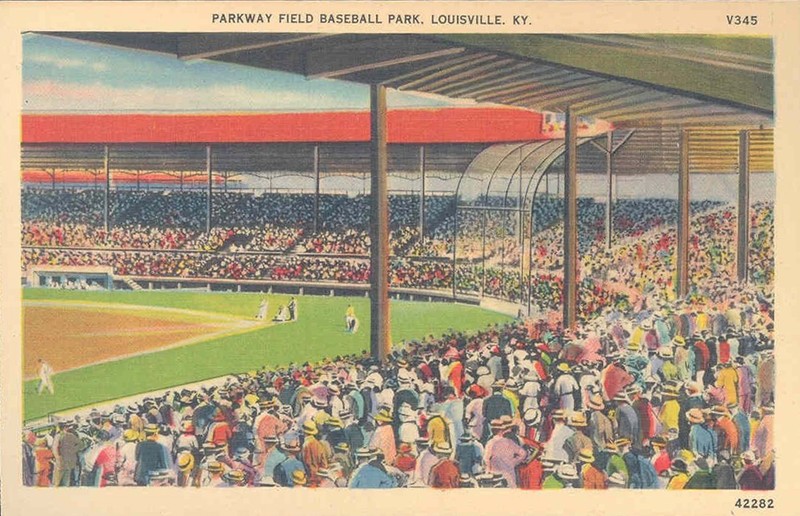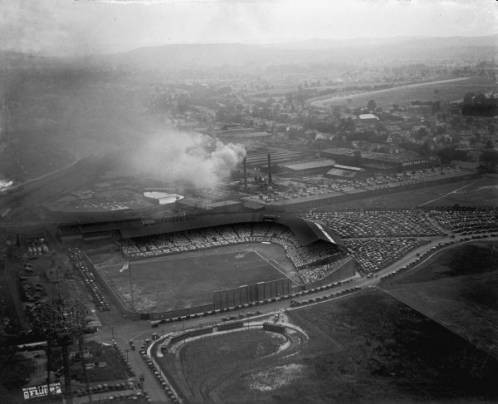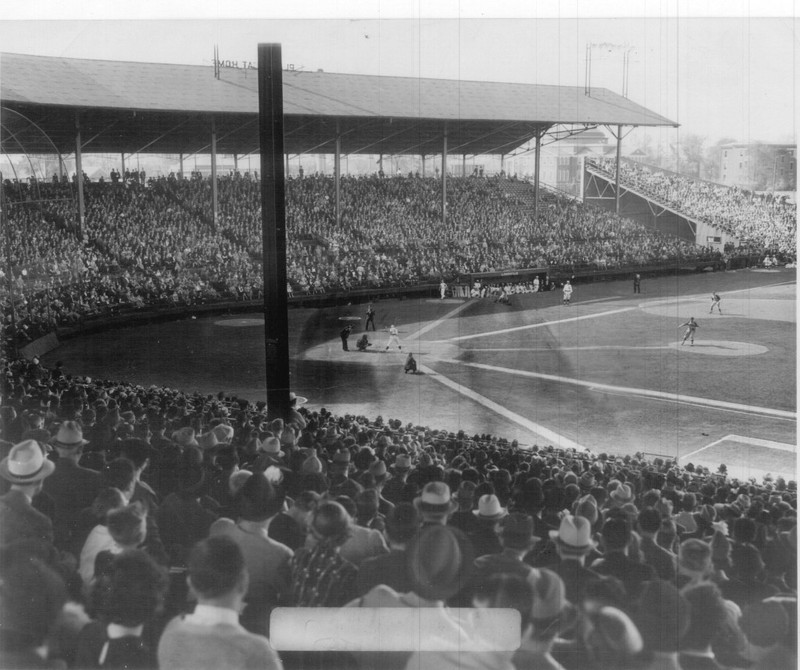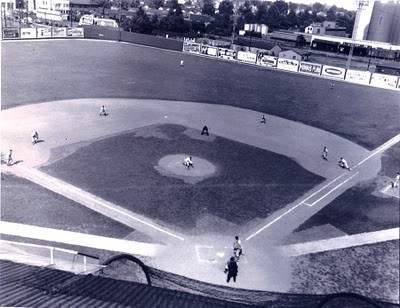Parkway Field
Introduction
Text-to-speech Audio
Images
Parkway Field, Louisville, Kentucky (Postcard Publisher Kyle Co., Louisville KY)

Parkway Field, July 4th, 1926- ULPA CS 073881, Caufield & Shook Collection, Photographic Archives, University of Louisville.

Photograph from the inside of the park- "Baseball Park, Crowd, Parkway Field," http://hdl.handle.net/10602/10494

Photograph of the baseball diamond at Parkway Field

Backstory and Context
Text-to-speech Audio
Parkway Field was home to many different baseball leagues and teams, but the field was originally designed in 1923 for the Louisville Colonels of organized baseball's minor leagues. After their original ballpark, Eclipse Park, was destroyed by a fire on November 20, 1922, club president William F. Knebelkamp quickly began planning for the new field. Parkway Field was built to include a concrete and steel grandstand designed by Leslie Abbot to attract local baseball fans. Due to a delay in construction, the Colonels' were forced to cancel their exhibition schedule for the 1923 season. However, the team won their first game in the new ballpark 5 to 1 on May 1, 1923, against the Toledo Mud Hens.
Parkway Field is also remembered as home to Earle Combs' final minor league game as a Louisville Colonel before he went on to become a New York Yankee. As a center fielder, Combs was a great ballplayer for the Colonels by quickly running down fly balls and hitting .344 on average. Combs batted .380 for the Louisville Colonels in 1923, leading the Yankees to acquire his contract the following year. Combs was later inducted into the Baseball Hall of Fame in 1970.
Although Parkway Field no longer exists, some of the remains have been put to good use as a result of a beautification project. Headed by Jane Ramsey, wife of University of Louisville President James Ramsey, the old green bricks from the original Parkway Field wall were sold to support the program and enhance the areas surrounding Cardinal Park, the new Jim Patterson Baseball Stadium, Papa John's Cardinal Stadium, the neighborhoods adjoining Belknap Campus and the University of Louisville campus. At the Jim Patterson Baseball Stadium, the first eight feet of the roof supports of an adjacent building from the stadium are constructed with the green bricks from the left wall at the historic Parkway Field. The infield dirt was also taken from Parkway field and placed in the batter's box at the Jim Patterson Baseball Stadium as a tribute to the former ballpark.
Sources
Parkway Field-Baseballreference.com 1- Ball Parks of the American Association (2010, June 14). In The American Association Almanac. Retrieved from http://www.almanacfield.com/index.php?p=1_4_-The-Ballparks
Berger, R (n.d.). SABR Baseball Project: Earle Combs. In Society for American Baseball Research. Retrieved from http://sabr.org/bioproj/person/62bcbcbd
Berger, R (n.d.). SABR Baseball Project: Earle Combs. In Society for American Baseball Research. Retrieved from http://sabr.org/bioproj/person/62bcbcbd
Earle Combs (n.d.). In National Baseball Hall of Fame. Retrieved from http://baseballhall.org/hof/combs-earle
Parkway Field legacy benefits beautification (2005, November). In University of Louisville. Retrieved from http://php.louisville.edu/news/news.php?news=465
Louisville Athletics Jim Patterson Stadium: Home of Louisville Cardinal Baseball (n.d.). In Official Website of University of Louisville Athletics. Retrieved from http://www.gocards.com/facilities/lou-facilities-patterson-stadium.html
